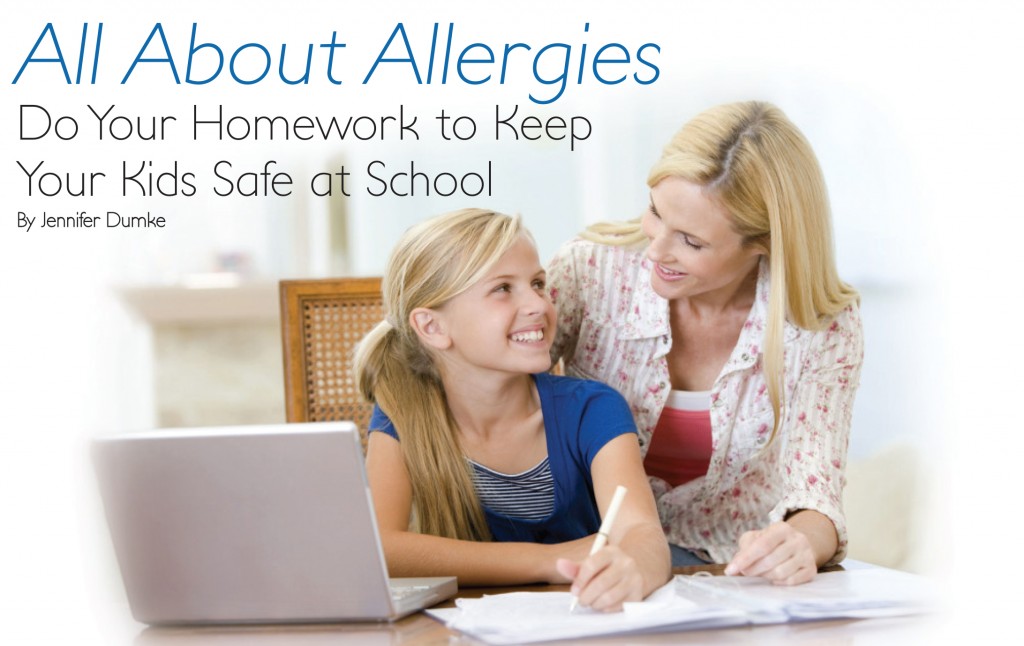“You can reduce the chances of an allergic reaction at school but never eliminate them. There must be communication between school officials, teachers and parents if a child has a highly sensitive allergy.”
– Dr. Laura Larsen, Board Certified Otolaryngologist, Midwest ENT
Preparing to send your child to school can sometimes be overwhelming, and if your child suffers from an allergy condition, you could be facing much more preparation than just purchasing the right pencil. But the key to keeping your children safe at school against allergies comes down to identifying, educating and managing the condition.
Dr. Laura Larsen, Board Certified Otolaryngologist for Midwest Ear Nose Throat, offers advice on keeping your kids out of the allergy danger zone.
 Identify
Identify
If you know your child has an allergy, you’re actually ahead of the curve because it can sometimes be difficult to identify allergies and their triggers. Even if your child hasn’t been diagnosed with an allergy, its best to know allergic symptoms in case your child comes in contact with a trigger or develops an allergy. Dr. Larsen says the most common allergies are either food or environmental. “Yes, those furry classroom pets could set off an allergic reaction if your child has an allergy to dander, which is classified as an environmental allergy.” Dr. Larsen adds that other common indoor environmental allergies include dust mites, mold and cockroaches. Hay fever, or ragweed allergy, is a common outdoor allergy. Since its peak season corresponds with the start of school (mid-August to late October), it can also be a problem.
For some children, food allergies can be a serious problem. Most people are familiar with peanut and milk allergies, but other common catalysts include tree nuts, soy, eggs and wheat. If you suspect your child is suffering from a food allergy, Dr. Larsen says to be on the lookout for identifiable symptoms such as a runny nose, congestion, watery eyes, sneezing or rash. “Food allergies can also cause abdominal symptoms such as diarrhea or stomach ache,” Dr. Larsen says. “Rarely do food allergies, even in a highly sensitive patient, trigger serious life-threatening reactions such as anaphylaxis. But if anaphylaxis is suspected, epinephrine is recommended. Peanuts and tree nuts do account for 90 percent of these serious reactions.”
Educate
“While your kids go to school to learn, it’s up to the parents to educate others if their child suffers from a known allergy. There must be communication between school officials, teachers and parents if a child is highly sensitive, especially if to peanut or tree nuts,” Dr. Larsen says. “Often times, this requires the cooperation of many people, including other students.”
Although Dr. Larsen says school isn’t the biggest hurdle for kids with food allergies, she does add that oftentimes children whose diet has been carefully monitored at home can create anxiety for the parent when they venture into an uncontrolled environment. “Serious reactions to food are infrequent, and although they can never be totally avoided, they can be managed,” Dr. Larsen says.
Manage
The number one way to manage an allergy is quite simple: avoid it. But when dealing with large numbers of children, numerous environments and various foods, that can be quite a challenge. With the number of children suffering from allergies increasing, schools are taking extra precautions. Dr. Larsen warns this can give a false sense of security. “With respect to food allergies, it’s reasonable to attempt avoidance at school by peanut-free zones in the lunch rooms or restrictions on a particular classroom if a child with severe peanut/tree nut allergies is in attendance,” she says.
But even with restrictions, reactions can still occur. You can reduce the chances of a reaction but you can never eliminate them. Dr. Larsen recommends emergency epinephrine auto injectors be available at school for the highly-sensitive child. Its better to over-treat if you suspect an anaphylactic reaction than to under-treat. And when in doubt, Dr. Larsen suggests to check with your physician to ensure your child remains safe, healthy and productive in the classroom.
Jennifer Dumke: Sioux Falls Woman Magazine
